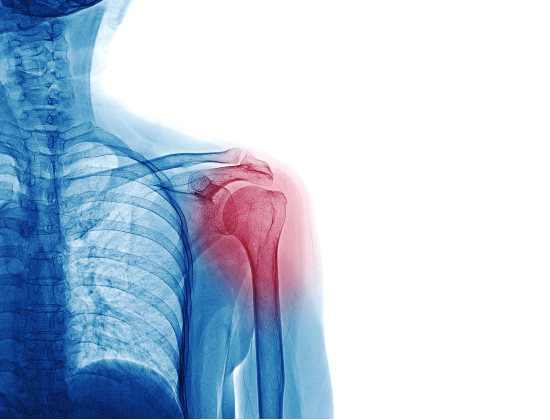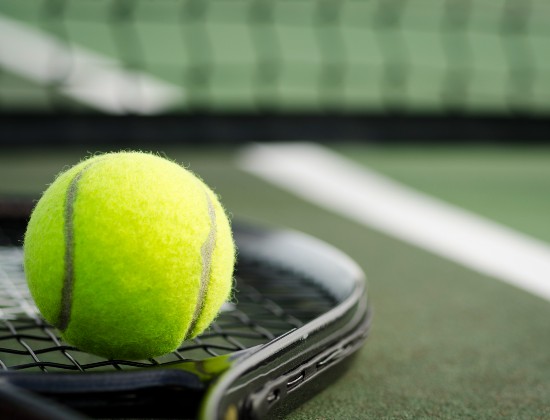Shoulder injuries: A common complaint for tennis players
With the tennis season now well and truly upon us, Fortius Clinic Consultant Shoulder and Elbow Surgeon Mr Ali Narvani provides advice about common shoulder injuries.
Shoulder pain is extremely common in tennis players. Studies suggest up to 25% of high-level players aged 12 to 19 and up to 50% of middle-aged players have shoulder pain.
The pain is mainly linked to overuse injuries related to repetitive activity of the muscles around the shoulder (particularly the rotator cuff) and those muscles that stabilise the shoulder blade (scapula).
An elite tennis player can hit up to 1,000 serves in a single tournament and the fastest tennis serve recorded is 263km/hour. To produce this speed, the shoulder needs to rotate more than 2,500 degrees per second which is equivalent to seven circles per second. Taking into consideration the huge number of repetitive strokes and the high stroke speed, it is not surprising that tennis players are particularly prone to shoulder injuries.
Common shoulder injuries
The most common shoulder conditions in tennis players include impingement, superior labral (SLAP) lesions, damage to the rotator cuff (including partial and full thickness rotator cuff tears), acromioclavicular (ACJ) pain and damage to the long head of the biceps.
The rotator cuff tendons attach the upper arm bone to the shoulder blade and pass through a narrow channel. If the balance of the shoulder is disturbed, particularly with repetitive overuse injury, these tendons can become impinged and damaged. There could also be damage to the labrum which is an oval shaped soft tissue ring attached to the socket of the shoulder joint.
However, these conditions are usually secondary to an ‘imbalance’ in the shoulder. Imbalances can be an abnormal position or movement of the shoulder blade (scapula dyskinesis), decreased internal rotation of the shoulder which is not adequately compensated for by increased external rotation (called glenohumeral internal rotation deficit: GIRD) or alteration in the ‘kinetic chain’.
Decreased internal rotation is mainly due to the tightening of the capsule at the back of the shoulder. The capsule is the soft tissue blanket that covers the ball and the socket joint.
The kinetic chain is the linking together of the different body segments during a tennis stroke including feet, ankles, lower legs, knees, upper legs, hips, pelvis, spine, shoulder blades, shoulders, upper arms, elbows, forearms, wrists and fingers. This chain is vital in terms of maximising efficiency and force and minimising the risk of injury to each of the segments including the shoulder.
Treatment for shoulder injuries
Shoulder injuries are split into 2 categories – conditions A which can lead to another set of conditions called conditions B. Conditions A include shoulder blade posture and movement abnormalities, reduced internal rotation and kinetic chain abnormalities. Conditions B include impingement, rotator cuff tears, superior labral lesions and damage to the long head of biceps. The best outcomes are achieved when conditions A are addressed in conjunction with conditions B. Similar to when you change the tyre on a car and need to also pay attention to the wheel balance and alignment.
Initial treatment usually involves physiotherapy. Some patients may have a corticosteroid injection to dampen the inflammation (but not repeated injections). Surgery is usually only considered if the condition remains despite physiotherapy. Surgical procedures vary depending on the injury, but it is usually keyhole surgery and may involve the repair or reconstruction of the various structural issues (rotator cuff tears or labral lesions).
Avoiding shoulder injuries
Tennis players can reduce their risk of injury in a number of ways:
- Correction of poor technique
- Adjustment of training volume and intensity
- Adequate warm up
- Ensuring they have the correct equipment including appropriate tennis racquet grip size, weight and string tension. Footwear which is appropriate for the playing surface is also important
- Making sure that all the segments of the ‘kinetic chain’ are in good condition and addressing any dysfunction of the body segments
- Optimising core stability
- Preventive exercises to increase shoulder blade (scapula) stabilization, increase rotator cuff strength and optimise shoulder rotation
The right equipment
Over the years, tennis racquets have changed enormously. The modern racquets are lighter, stiffer and have a larger head. Lighter racquets allow a faster swing but this can mean less protection to the arm during the shock of impact. Stiffer racquets increase the speed of ball rebound but may also result in a greater shock impact. Larger head sizes enable higher speeds of ball rebound, have a bigger sweet spot and are therefore more forgiving but they may be harder to control and can lead to more rotational force in the hand.
It’s important to seek the advice of a tennis coach to ensure that you have the right racquet for you and your playing style.



